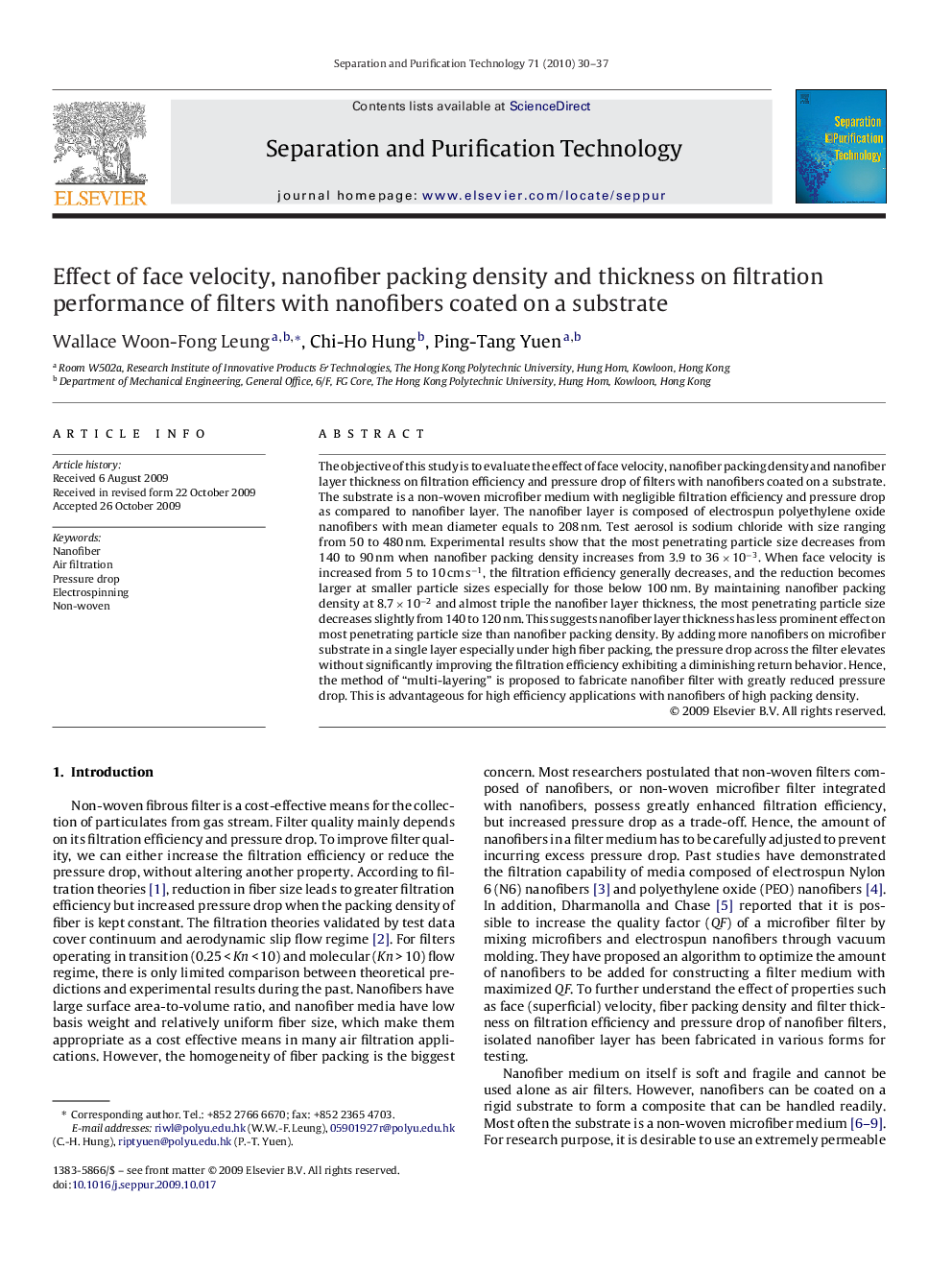| Article ID | Journal | Published Year | Pages | File Type |
|---|---|---|---|---|
| 643088 | Separation and Purification Technology | 2010 | 8 Pages |
The objective of this study is to evaluate the effect of face velocity, nanofiber packing density and nanofiber layer thickness on filtration efficiency and pressure drop of filters with nanofibers coated on a substrate. The substrate is a non-woven microfiber medium with negligible filtration efficiency and pressure drop as compared to nanofiber layer. The nanofiber layer is composed of electrospun polyethylene oxide nanofibers with mean diameter equals to 208 nm. Test aerosol is sodium chloride with size ranging from 50 to 480 nm. Experimental results show that the most penetrating particle size decreases from 140 to 90 nm when nanofiber packing density increases from 3.9 to 36 × 10−3. When face velocity is increased from 5 to 10 cm s−1, the filtration efficiency generally decreases, and the reduction becomes larger at smaller particle sizes especially for those below 100 nm. By maintaining nanofiber packing density at 8.7 × 10−2 and almost triple the nanofiber layer thickness, the most penetrating particle size decreases slightly from 140 to 120 nm. This suggests nanofiber layer thickness has less prominent effect on most penetrating particle size than nanofiber packing density. By adding more nanofibers on microfiber substrate in a single layer especially under high fiber packing, the pressure drop across the filter elevates without significantly improving the filtration efficiency exhibiting a diminishing return behavior. Hence, the method of “multi-layering” is proposed to fabricate nanofiber filter with greatly reduced pressure drop. This is advantageous for high efficiency applications with nanofibers of high packing density.
